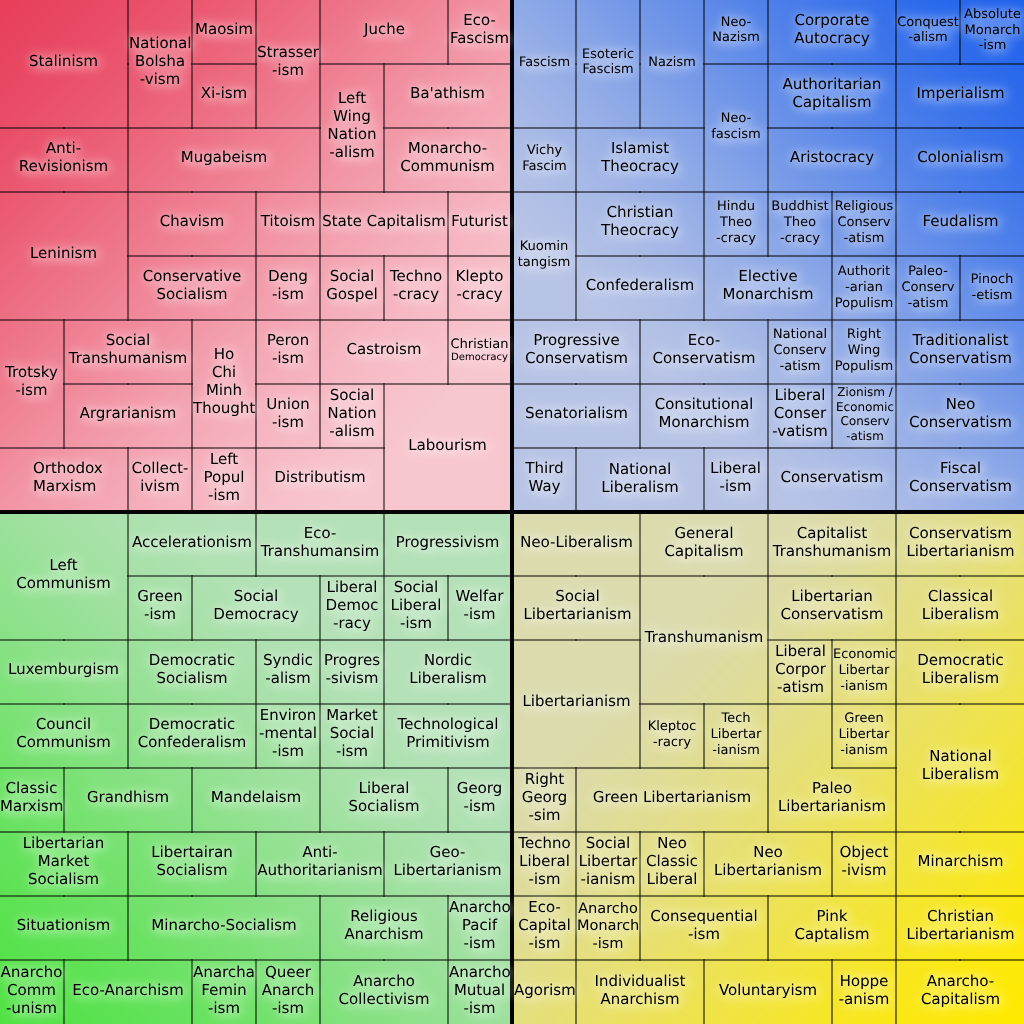Where Is Fascism on the Political Compass?
It's a far-right, authoritarian ideology that puts the state above all else. Here's exactly where it fits on the political map.

Fascism is typically located in the Authoritarian Right quadrant. For a detailed, interactive version, explore our full political chart.
Fascism in a Nutshell
High Authority is Key
Fascism's defining feature is extreme authoritarian control, demanding total loyalty to the state and leader.
Not About Free Markets
Often called "far-right," fascism is not about pure capitalism. It uses a state-controlled economy to serve nationalist goals.
Understanding Fascism on the Political Map
The political compass is like a two-way grid. Think of it as a graph with four corners: Left vs. Right (economic issues) and Authoritarian vs. Libertarian (social freedom and government control).
So, where does fascism land? Political scientists usually place it in the authoritarian-right quadrant. That means:
- It wants a strong, controlling government.
- It values the nation above everything.
- It doesn’t like lots of personal freedoms.
But how did we get here? And what does fascism really mean in our world today?
What Is Fascism, Exactly?
Fascism is a political ideology—a set of ideas about how societies should work. The term came from Italy after World War I. Its key founder was Giovanni Gentile, a political philosopher who helped shape Italian fascism along with dictator Benito Mussolini. Gentile believed the individual didn’t matter much. What mattered was the state—meaning the government and nation.
In fascism, the citizen exists to serve the country, not the other way around.
Fascism favors:
- One strong leader (like a dictator)
- Powerful police and military
- Harsh punishment for dissent
- Emotional speeches and national pride over facts or debate
This mix of nationalism and control is why fascism shows up as far-right and authoritarian on the political compass.
Historical Example: Adolf Hitler and Nazi Germany
When people mention fascism, they often think of Adolf Hitler. He led the National Socialist German Workers’ Party—also known as the Nazis. Despite the word "socialist" in the name, Hitler and the Nazi Party were not left-wing.
So why the "socialist" label at all? It was mostly for public appeal. In practice, Hitler's regime hated communism (a far-left ideology) and targeted left-wing groups in Germany.
Under Hitler:
- The government controlled the press
- Political opponents were arrested or killed
- Minorities (especially Jews) were targeted and blamed for problems
- The death penalty and capital punishment were widely used
In political compass terms, this is extreme-right and deeply authoritarian.
You can explore more insights on this in How Fascism Works by Jason Stanley, which shows how fascist ideas creep into modern politics.

Fascism vs. Other Ideologies
Let’s compare where fascism sits on the compass compared to some others:
- Fascism: Far-right, strong government control, little social freedom, strong nationalism.
- Communism (Far-Left): Economic equality, often strong government control too, collective ownership.
- Liberal Democracy (Center): Elections and individual rights, balanced government control, support for free press and social freedom.
Modern Warnings
So why talk about fascism today? Because, as Madeleine Albright explains in her book Fascism: A Warning, political leaders today still use fascist tactics. These include:
- Blaming outsiders or minorities
- Attacking the news and courts
- Encouraging violence at rallies
- Asking for loyalty to a leader instead of the law
These actions don’t have to come from a full-blown fascist regime to be dangerous. They shift society toward authoritarianism.

The Bottom Line
To sum it up: Fascism is a far-right, authoritarian ideology. It limits personal freedoms, censors the media, and enforces loyalty to the state. It’s marked by strong leaders, nationalism, and rejection of democracy. On the political compass, fascism sits firmly in the authoritarian-right quadrant.
Understanding where fascism fits can help us spot when political movements get too extreme. Paying attention to how power is used—and who it serves—is key to preserving freedom.
Find your place on the spectrum.
Now that you understand where fascism sits, find out where your own views align.
Take the Free Political Test